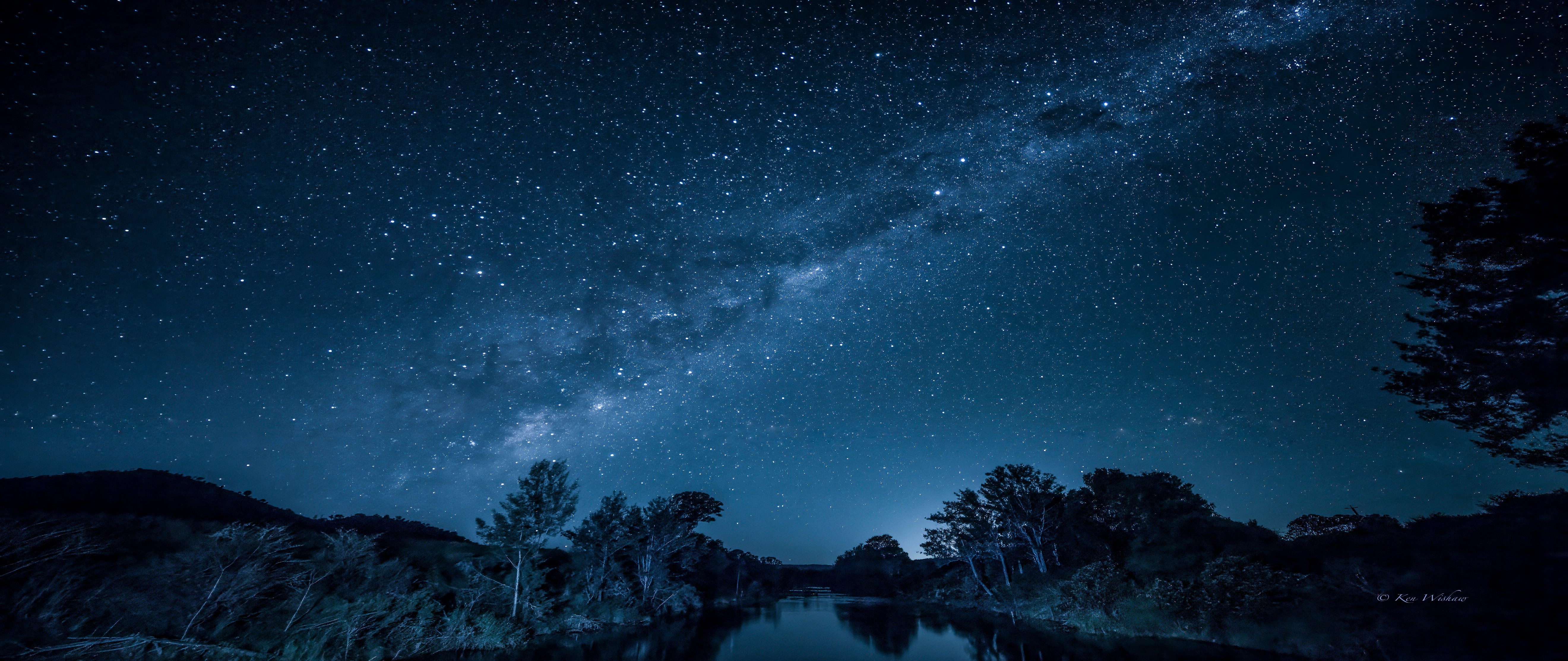As the movement to establish a Dark Sky Reserve in the Sunshine Coast hinterland forges ahead, residents say they are willing to help reduce light pollution for our region's environment, unique character, health and wellbeing.
In the latest round of community consultation on the journey to establish the proposed reserve, 89 per cent of respondents said they would change their lighting habits to reduce light pollution in our region.
Sunshine Coast Council is proposing to establish a Dark Sky Reserve in the hinterland, encompassing almost 900 square kilometres in the Mary River Catchment and adjoining national parks in our local government area.
Establishing the reserve would help protect our hinterland's starry night skies - along with our landscape and character, environment and wellbeing - from light pollution as our region's population grows.
Consultation outcomes, technical documentation and a draft application to establish the Dark Sky Reserve under the International Dark Sky Places Program is proposed to be presented to Council for consideration in early 2026 to confirm the way forward.
Environment and Liveability Portfolio Councillor Tim Burns said the latest round of consultation investigated local light pollution impacts and asked for feedback on a Draft Lighting Management Plan.
"In 2024, we first went out to our community to make sure dark skies were something our community wanted to protect, and the response was an emphatic 'yes'," Cr Burns said.
"In this second round, we presented the technical detail of how we would manage Council-controlled lighting in a Dark Sky Reserve while encouraging dark sky friendly practices for others who manage lighting in the proposed reserve, including Energex, Queensland Government and the community.
"We also shared night sky quality data from across the proposed reserve that shows what an incredible natural wonder we have in our skies."

The Draft Lighting Management Plan
Under the Draft Lighting Management Plan, Council would need to follow dark sky compliant specifications for new or upgraded Council-controlled outdoor lighting in the proposed reserve area.
Division 5 Councillor Winston Johnston said those upgrades were already underway in some areas.
"When we have ageing Council-controlled lighting in the reserve area that needs replacing, the new lighting is now dark sky friendly: it shines where it's needed, with a warmer glow and more efficient LEDs," Cr Johnston said.
"It reduces light pollution, saves ratepayer funds in electricity costs, is gentler on the eyes and still keeps our roads and public spaces safe."
Cr Johnston said dark skies had wide-ranging benefits for the environment and our health and wellbeing.
"Starry skies are part of our heritage, our hinterland character.
"We all know the feeling of wonder when you look skyward on a clear night.
"If we can protect that feeling for future generations, as well as the wildlife and our health that benefits from it, that's something for everyone to be proud of."
What we can all do to help
Cr Burns was excited to see 89 per cent of respondents flag they would change their habits to reduce light pollution.
"In our Sunshine Coast Biosphere, everything we do has ripple effects, and every one of us has the power to help protect starry skies from light pollution," Cr Burns said.
"It's about doing what we can: turning off outdoor lights when we're not using them, switching in a warmer light when we next replace a bulb, or choosing dark sky friendly options when we buy outdoor lights.
"If almost nine out of ten community members are willing to do this, we can make a real difference."
Council presented the Draft Lighting Management Plan for community feedback between June 16 and July 11.
Of those who responded:
- 94 per cent think it is important or very important to preserve dark skies in their community
- 91 per cent agreed or strongly agreed with the draft lighting management plan's purpose and objectives
- 89 per cent are likely or extremely likely to change their lighting habits to help protect our night skies.
The summary of community feedback is available on Council's website.
This second round of consultation follows initial community feedback on the proposal in 2024, when more than 95 per cent of 1200 survey respondents supported protecting dark skies for future generations.
Remember, no matter where we live, we can all help protect our dark skies by ensuring outdoor lighting is:
- useful - use lighting only if it has a clear purpose
- targeted - direct lighting so it falls only where it is needed or use shields on lights
- low level - keep lighting no brighter than necessary
- controlled - use controls such as timers or motion sensors to ensure light is only on when required
- warm coloured - use warmer coloured lights with low blue-violet light where possible.






